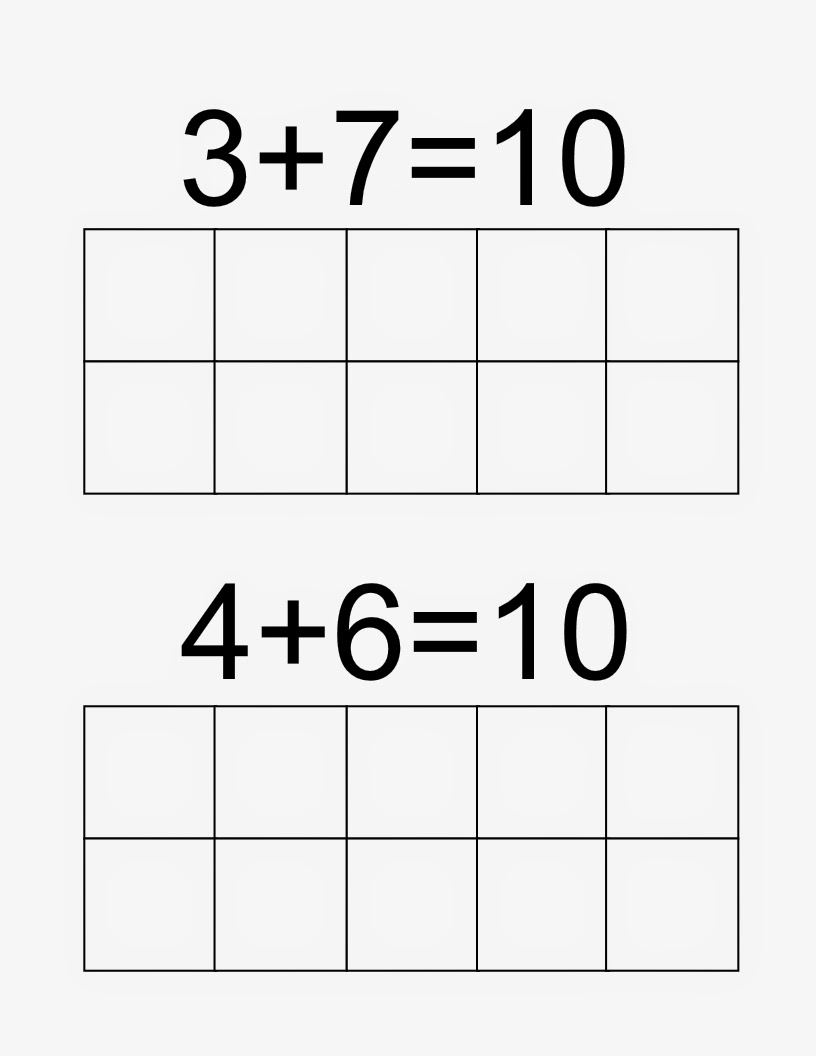Unlocking The Power Of Ten Frame Math: A Comprehensive Guide
In the world of mathematics education, finding effective methods to engage young learners is essential for their cognitive development. Ten frame math is one such innovative approach that helps children visualize numbers and understand basic arithmetic concepts. By using a simple 10-frame tool, educators can provide students with a solid foundation in counting, addition, and subtraction, making math both enjoyable and approachable. As children manipulate physical or digital ten frames, they gain insight into number relationships and develop a strong number sense. This visual strategy not only aids in comprehension but also sets the stage for more complex mathematical concepts as students progress in their education.
Moreover, ten frame math offers a versatile platform for teaching various mathematical skills, making it an invaluable resource in the classroom. Teachers can adapt ten frames for different learning activities, enabling students to explore numbers in a hands-on way. By incorporating ten frame math into their lessons, educators can foster a love for math while helping students build essential problem-solving skills. In this article, we will explore the intricacies of ten frame math, its benefits, and how it can be effectively implemented in educational settings.
As we delve into the world of ten frame math, we will answer common questions, provide practical tips, and offer creative ideas for integrating this powerful tool into your teaching repertoire. Whether you're a teacher, parent, or caregiver, understanding ten frame math is crucial for supporting the mathematical development of young learners. Let’s uncover the magic of ten frames and how they can transform the way children learn.
What is Ten Frame Math?
Ten frame math is a visual representation of numbers using a rectangular frame divided into ten equal sections. This simple tool helps students understand number concepts, recognize patterns, and perform basic arithmetic operations. By filling in the ten frame with counters, students can easily see the relationships between numbers, making it easier to grasp addition and subtraction.
How Does Ten Frame Math Work?
The ten frame consists of two rows of five boxes each, allowing for easy visualization of numbers from 0 to 10. When teaching ten frame math, educators can use physical counters, such as buttons or blocks, or digital versions available in educational software. Students fill in the ten frame to represent different numbers, making it an interactive and engaging way to learn.
Why is Ten Frame Math Important for Young Learners?
Understanding the significance of ten frame math is crucial for recognizing its benefits in early math education. Some key reasons include:
- Enhances number sense and understanding of quantity.
- Facilitates the development of addition and subtraction skills.
- Encourages pattern recognition and critical thinking.
- Promotes visual learning, making abstract concepts more concrete.
How Can Teachers Incorporate Ten Frame Math in the Classroom?
Teachers can implement ten frame math in various ways to make learning fun and effective:
- Use physical ten frames with counters for hands-on practice.
- Incorporate digital ten frame tools in math lessons.
- Engage students in group activities that involve filling in ten frames collaboratively.
- Introduce games that utilize ten frames, such as bingo or matching games.
What Activities Can Enhance Understanding of Ten Frame Math?
To maximize the effectiveness of ten frame math, educators can introduce various activities:
- Number Formation: Students can practice writing numbers while filling in ten frames.
- Story Problems: Create simple addition and subtraction problems using ten frames.
- Comparative Activities: Have students compare numbers by filling in two ten frames and discussing which has more or less.
- Creative Art Projects: Encourage students to create ten frame art by using different materials to fill the frames.
How Can Parents Support Ten Frame Math Learning at Home?
Parents play a crucial role in reinforcing ten frame math concepts outside the classroom. Here are some ways they can support their child's learning:
- Create DIY ten frames using cardboard and counters from around the house.
- Engage in math games that involve ten frames during family game nights.
- Encourage daily counting activities using ten frames for practical applications.
- Utilize online resources and apps that feature ten frame math exercises.
What Challenges Might Students Face with Ten Frame Math?
While ten frame math is an effective teaching tool, some students may encounter challenges:
- Difficulty visualizing numbers and their relationships.
- Struggles with fine motor skills when placing counters in the frames.
- Confusion with the concept of "more than" or "less than" when comparing numbers.
How Can Educators Address These Challenges?
To help students overcome challenges with ten frame math, educators can employ a variety of strategies:
- Provide one-on-one support for students who need extra help.
- Use manipulatives that are easier for young children to handle.
- Encourage peer collaboration to foster a supportive learning environment.
- Regularly assess students' understanding to identify areas needing improvement.
Conclusion: Embracing Ten Frame Math for Lifelong Learning
In conclusion, ten frame math is a valuable tool that can significantly enhance the mathematical understanding of young learners. By utilizing this visual aid, educators and parents can help children develop essential skills such as number sense, addition, and subtraction. As students gain confidence in their math abilities through engaging activities and supportive environments, they are more likely to embrace lifelong learning in mathematics. The impact of ten frame math extends beyond the classroom, laying the foundation for future success in more complex mathematical concepts. Embracing ten frame math is not just about teaching numbers; it's about inspiring a love for learning that will last a lifetime.
Article Recommendations
- Sophie Rain Leak
- Leslie Charleson
- Stephen Stills Wife
- Tony Hinchcliffe Parents
- Kurt Russell
- Recall On Ramen Noodles 2024
- John Alvin Actor
- David Arthur Carr
- Luke Beasley Partner
- Vijay Varma First Wife




